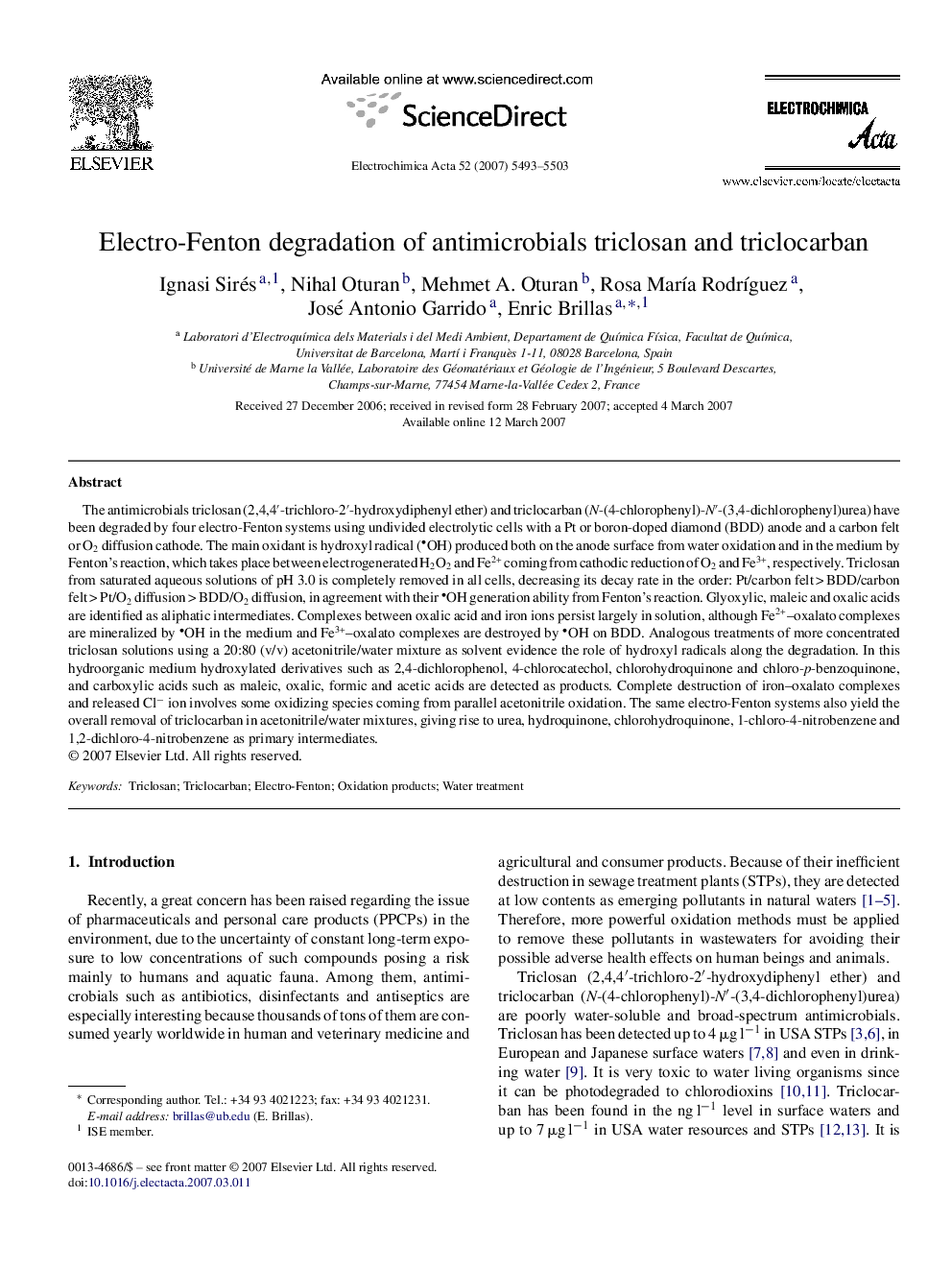| کد مقاله | کد نشریه | سال انتشار | مقاله انگلیسی | نسخه تمام متن |
|---|---|---|---|---|
| 193360 | 459767 | 2007 | 11 صفحه PDF | دانلود رایگان |

The antimicrobials triclosan (2,4,4′-trichloro-2′-hydroxydiphenyl ether) and triclocarban (N-(4-chlorophenyl)-N′-(3,4-dichlorophenyl)urea) have been degraded by four electro-Fenton systems using undivided electrolytic cells with a Pt or boron-doped diamond (BDD) anode and a carbon felt or O2 diffusion cathode. The main oxidant is hydroxyl radical (OH) produced both on the anode surface from water oxidation and in the medium by Fenton's reaction, which takes place between electrogenerated H2O2 and Fe2+ coming from cathodic reduction of O2 and Fe3+, respectively. Triclosan from saturated aqueous solutions of pH 3.0 is completely removed in all cells, decreasing its decay rate in the order: Pt/carbon felt > BDD/carbon felt > Pt/O2 diffusion > BDD/O2 diffusion, in agreement with their OH generation ability from Fenton's reaction. Glyoxylic, maleic and oxalic acids are identified as aliphatic intermediates. Complexes between oxalic acid and iron ions persist largely in solution, although Fe2+–oxalato complexes are mineralized by OH in the medium and Fe3+–oxalato complexes are destroyed by OH on BDD. Analogous treatments of more concentrated triclosan solutions using a 20:80 (v/v) acetonitrile/water mixture as solvent evidence the role of hydroxyl radicals along the degradation. In this hydroorganic medium hydroxylated derivatives such as 2,4-dichlorophenol, 4-chlorocatechol, chlorohydroquinone and chloro-p-benzoquinone, and carboxylic acids such as maleic, oxalic, formic and acetic acids are detected as products. Complete destruction of iron–oxalato complexes and released Cl− ion involves some oxidizing species coming from parallel acetonitrile oxidation. The same electro-Fenton systems also yield the overall removal of triclocarban in acetonitrile/water mixtures, giving rise to urea, hydroquinone, chlorohydroquinone, 1-chloro-4-nitrobenzene and 1,2-dichloro-4-nitrobenzene as primary intermediates.
Journal: Electrochimica Acta - Volume 52, Issue 17, 5 May 2007, Pages 5493–5503